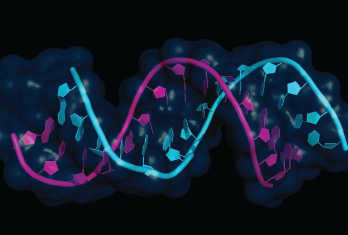
petarg / shutterstock.com
Researchers working to decode the epigenetic landscape for rheumatoid arthritis (RA) were surprised to discover a connection to Huntington’s disease, a finding that could pave the way to discoveries of new therapeutic targets.
By developing new methods to integrate data from epigenetic technologies, scientists at the University of California, San Diego (UCSD), set out to map the epigenome of rheumatoid arthritis and discovered potential, non-obvious biological targets for treatment of the disease. The findings were published in the May issue of Nature Communications.1
“We were most interested in identifying disease mechanisms that were not predictable, creating the opportunity to understand disease in a way that could not have been gleaned from simply looking at published reports,” says Gary S. Firestein, MD, dean and associate vice chancellor of translational medicine at UCSD.
Epigenetics is the study of DNA modifications that alter the genome without a change to DNA sequence; this process is responsible for some of the fine-tuning of gene expression, explains Dr. Firestein. Changes in the epigenome can help determine which genes are turned on or off and can be triggered by a variety of environmental elements, such as stress, physical activity and lifestyle choices.
Although epigenetic function is part of normal human growth and development, it can also go badly wrong and, ultimately, cause diseases, such as cancer, or contribute to the pathogenesis of diseases, such as in rheumatoid arthritis, says Dr. Firestein. “The changes that occur with rheumatologic diseases are much more subtle than cancer,” he says. “Generally, we are talking about relatively modest changes that just tweak cell behavior.”
Mapping the Epigenomic Landscape of RA

Dr. Firestein
Dr. Firestein and his team of researchers investigated the fibroblast-like cells that line the joints of patients with rheumatoid arthritis as well as those of osteoarthritis patients who served as a control group. To begin the process of mapping the epigenomic landscape of RA, they analyzed 191 data sets through examination and measurement of chromatin, DNA and histone modifications from both RA and osteoarthritis patients.
To maximize the potential for identifying differences in RA, researchers used cells from patients with late-stage disease. They focused on isolated cells collected at the time of surgery from the tissue of people who had total joint replacement.
“We fully profiled key epigenetic marks in RA patients and compared them to individuals who did not have this disease,” says Dr. Firestein. “As a control, for example, we used osteoarthritis because that is not generally considered an autoimmune disease.”

